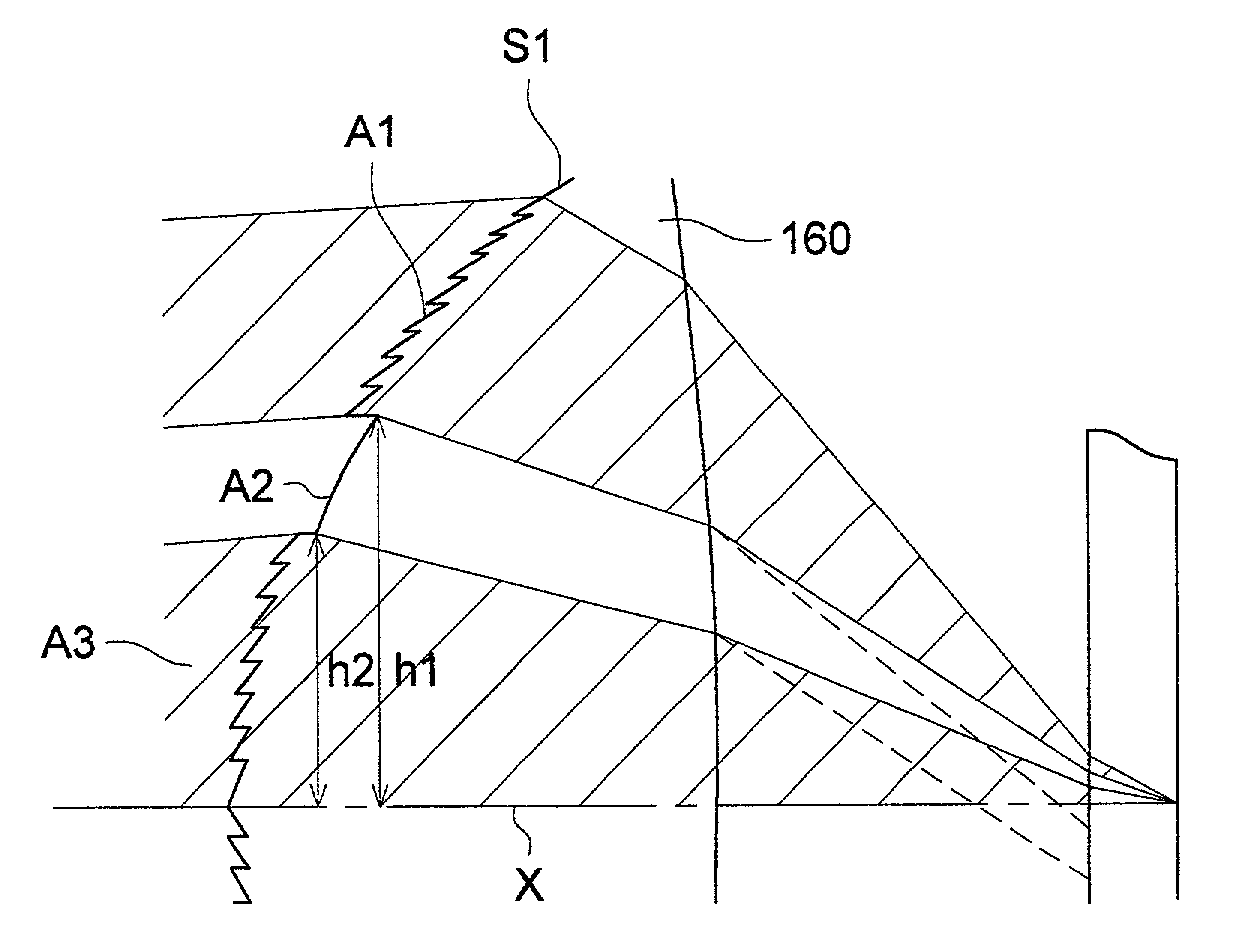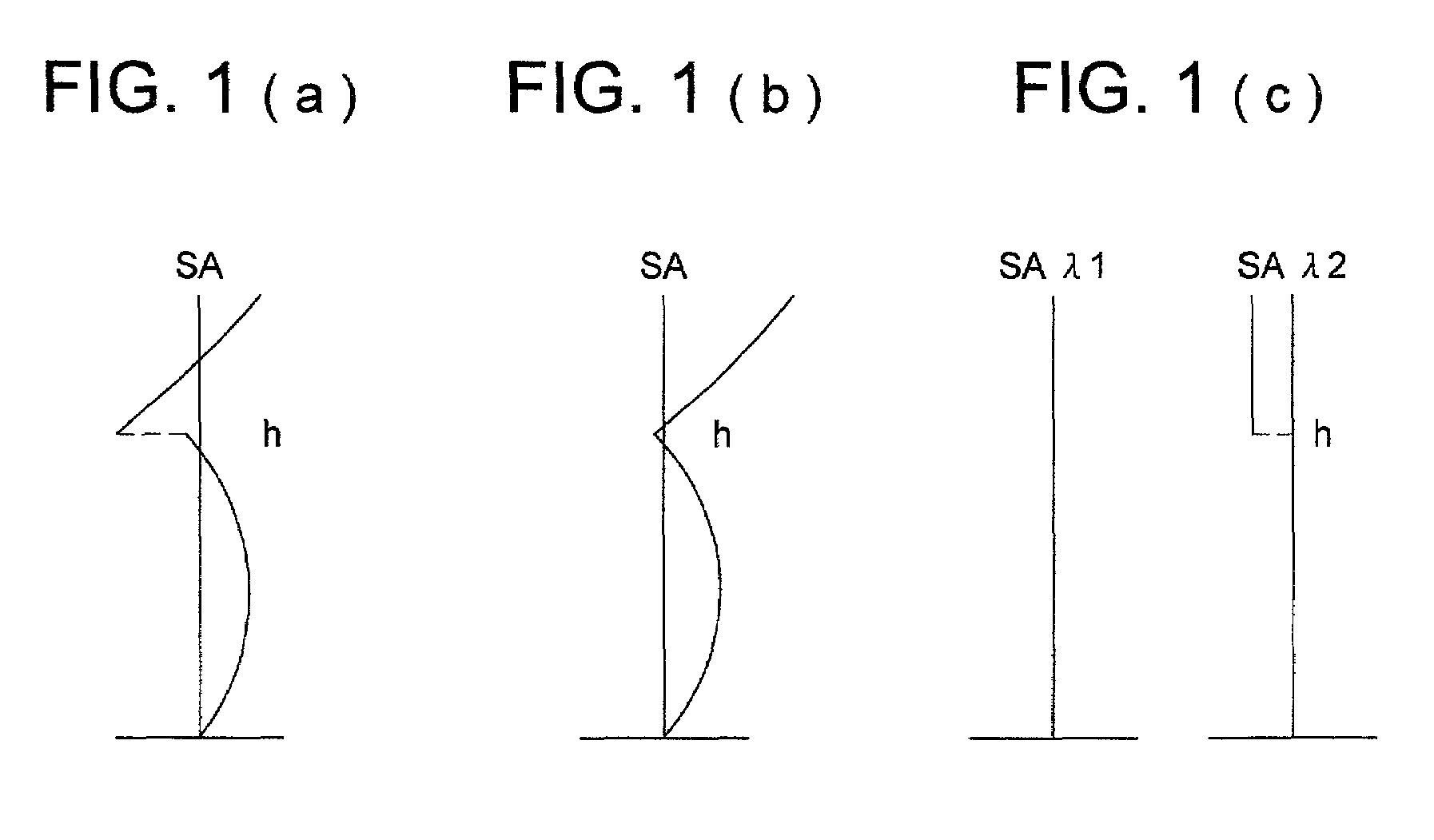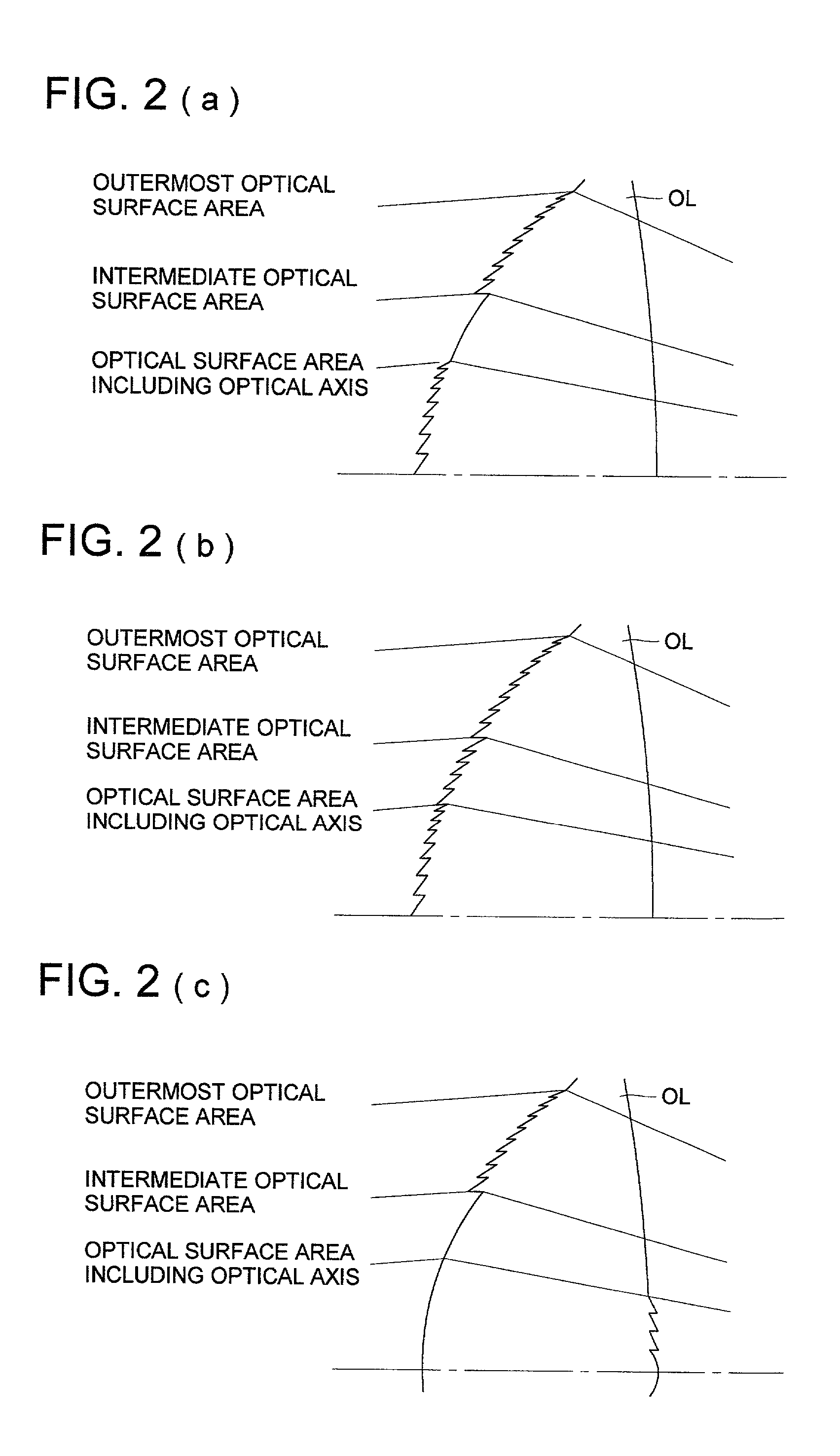Optical pickup apparatus and objective lens
a pickup device and optical technology, applied in the field of objective lenses, can solve the problems of difficult to make f smaller than the present value, difficult to realize the effect of objective lenses and optical pickup devices having sufficient optical performance, and achieve excellent temperature characteristics
- Summary
- Abstract
- Description
- Claims
- Application Information
AI Technical Summary
Benefits of technology
Problems solved by technology
Method used
Image
Examples
first embodiment
(First Embodiment)
[0480]First embodiment will be explained as follows. FIG. 5 is a schematic structure diagram of an optical pickup device. In optical pickup device 100 shown in FIG. 5, a light flux emitted from semiconductor laser 111 representing a light source passes through beam splitter 120 representing a light merging means, then, stopped down by diaphragm 17 to the prescribed numerical aperture, and forms a spot on information recording surface 220 through diffraction-integrated objective lens 160 and through transparent base board 210 of high density recording optical disk 200 representing an optical information recording medium. A wavelength (standard wavelength) of the semiconductor laser light is 650 nm.
[0481]A reflected light flux modulated by information bit on information recording surface 220 passes through the diffraction-integrated objective lens 160 again to be changed into a converged light, then, further passes through diaphragm 17 to be reflected on beam splitte...
second embodiment
(Second Embodiment)
[0491]Next, the second embodiment will be explained. This embodiment is one wherein a wavelength of a light source under which DVD is used is different from that under which CD is used, and explanation of portions in this embodiment which are the same as those in the first embodiment will be omitted. In the optical pickup device (that is of a type of two light sources and one detector) related to the present embodiment shown in FIG. 7, there are provided semiconductor laser 111 (designed wavelength λ1=650 nm) representing the first light source for reproducing the first optical disk (DVD) and semiconductor laser 112 (designed wavelength λ1=780 nm) representing the second light source for reproducing the second optical disk (CD).
[0492]First, when reproducing the first optical disk, a beam is emitted from the first semiconductor laser 111, and the light flux thus emitted passes through beam splitter 190 which is a light merging means for light emitted from the semic...
third embodiment
(Third Embodiment)
[0503]Next, the third embodiment will be explained. This embodiment is one wherein a wavelength of a light source under which DVD is used is the same as that under which CD is used, and explanation of portions in this embodiment which are the same as those in the aforesaid embodiment will be omitted. An optical pickup device is the same as one shown in FIG. 5 in terms of structure. A schematic structure diagram of an objective lens is shown in FIG. 9.
[0504]On surface S1 of objective lens 160 closer to a light source, there are formed three optical surface areas A1, A2 and A3 each being designed optically based on a different concept. However, from the viewpoint of using a light flux, a light flux passing through the outermost optical surface area A1 and the innermost optical surface area A3 is used to form an optical spot on a recording surface in the case of using DVD, and a light flux passing through the intermediate optical surface area A2 and the innermost opti...
PUM
| Property | Measurement | Unit |
|---|---|---|
| wavelength | aaaaa | aaaaa |
| thickness | aaaaa | aaaaa |
| thickness | aaaaa | aaaaa |
Abstract
Description
Claims
Application Information
 Login to View More
Login to View More - Generate Ideas
- Intellectual Property
- Life Sciences
- Materials
- Tech Scout
- Unparalleled Data Quality
- Higher Quality Content
- 60% Fewer Hallucinations
Browse by: Latest US Patents, China's latest patents, Technical Efficacy Thesaurus, Application Domain, Technology Topic, Popular Technical Reports.
© 2025 PatSnap. All rights reserved.Legal|Privacy policy|Modern Slavery Act Transparency Statement|Sitemap|About US| Contact US: help@patsnap.com



